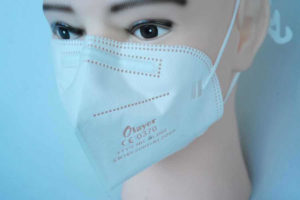Are you looking for a way to improve the quality of your photos? You might want to consider adding en149 FFP2 face masks into your workflow. FFP2 face mask is an excellent way to ensure that colour casts and other problems don’t affect the quality and accuracy of your photo output. This guide will discuss everything from why you should use them, what they do, how they work, and much more!
Who does the EN149 FFP2 face mask protect?
The FFP masks protect the lungs of health care workers and others who are at risk. The mask covers their nose and mouth, preventing them from breathing in particles that may contain TB bacteria. When they contact a patient’s sputum or other substances containing TB germs, the person has to remove these items from the area quickly. It would be best if you also bought these masks from a particular FFP2 mask manufacturer.
How Much Does FFP2 Mask Cost?
The FFP2 mask company has set up the cost of these masks based on the type and style. If you are looking for a low-cost mask, consider purchasing one that is made of paper. These masks will need to be replaced more often than silicone masks because they have a higher risk of being torn or damaged. However, these reusable masks can last up to three years and cost less than $25 apiece; this is the most affordable option.

en149 ffp2 face mask
Suppose you are looking for a less expensive option. In that case, the company also sells masks that come with an organic cotton cover made of natural fibres and either polyester or nylon mesh. These masks cost $35-$40 apiece, but they do not need to be replaced as often as paper masks because their material is more robust from water resistance and protection from airborne pollutants.
Can You Reuse Your EN149 FFP2 face Mask?
Yes, you can reuse your EN149 FFP mask. It is not necessary to purchase new masks for each project or task. However, it should be noted that the silicone will start to degrade after some time and lose its effectiveness in protecting from particulates such as dust/dirt particles. At this point, you may want to consider purchasing a new fresh en149 FFP2 face mask if there are visible signs of degradation.
This includes holes or tears on the material’s surface due to wear and tear caused by wearing the mask over long periods without adequately storing it between uses (i.e., using a hairdryer instead). In addition, masks should not be reused if it was used for an activity that exposes the mask to solid chemicals. For example, using an FFP Mask to apply adhesive may cause the silicone surface of the mask to become stained and unusable after repeated use.
The Bottom Line
en149 FFP2 masks are an excellent way to ensure that colour casts and other problems don’t affect the quality and accuracy of your photo output. We hope that this guide has been informative and helped you better understand what FFP2 masks are, how they work, why they should be used in your workflow, and more.